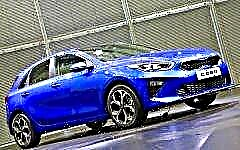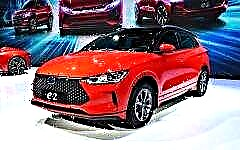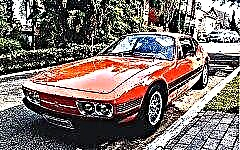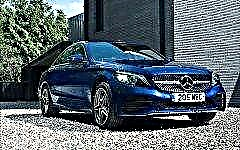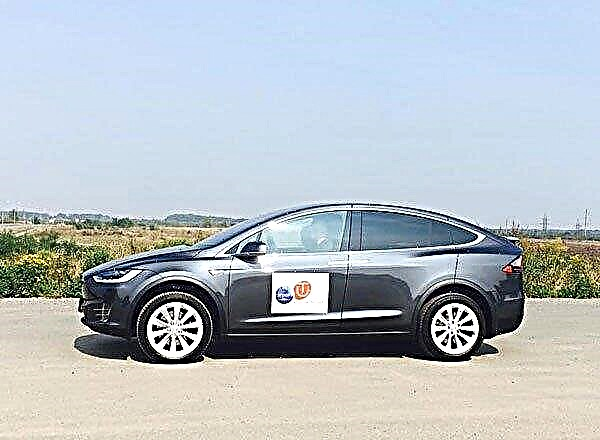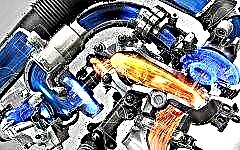

The content of the article:
- The essence of the process
- How and why there is a turbo lag
- Some features
"Turbo lag" (or "turbo lag") is a short-term failure (delay) when gaining speed and revolutions of the turbo engine after a sharp depressing of the "gas" (accelerator) pedal.
As a rule, this phenomenon occurs when the turbo engine is operating at low speeds (1000 - 1500 rpm) and is associated with the inertia of the turbo system, when it takes some time (2-3 sec) to spin up the leading turbine impeller by the exhaust gas flow. As a result, the car accelerates not smoothly, but in a "jump". the turbo lag can be felt both on the "diesel" and on the gasoline turbo engine. Simply, on the "diesel", due to its design feature, the turbolag is felt stronger.
The essence of the process

In the turbine of the turbo engine, 2 impellers are installed - "driving" and "driven", with rigid attachment to the common shaft and located in separate sealed chambers.
To increase the revs and speed, the driver presses the accelerator ("gas") pedal, increasing the flow of fuel into the combustion chambers of the cylinders, where the incoming fuel must completely burn out and release the exhaust gases, which will then be directed to the driving impeller and begin to rotate it, together with a shaft.
Due to the fact that both impellers (leading and driven) are rigidly attached to one common shaft, the driven impeller also begins to rotate and pump atmospheric air into the combustion chambers of the cylinders. The turbine impellers are capable of rotating at more than 150,000 rpm. And the stronger the flow of exhaust gas will press on the driving impeller, the faster the driven impeller will rotate and, accordingly, the more powerfully the air will be pumped into the combustion chambers of the cylinders.
At an early stage of operation in the process described above, there was a danger of the so-called "engine runaway", when the engine speed began to grow uncontrollably (regardless of the driver), and with them (when the gear was engaged) the speed began to increase uncontrollably. The engine seemed to get out of control and "went into gear", skidding in place, uncontrollably accelerating and issuing from the exhaust pipe thick black or white smoke with tongues of flame and loud noise. How and how bad it could have ended is not difficult to imagine ...
To limit the number of revolutions of the turbine and to save the motor from "runaway", they began to use in the design of the turbo engine bypass valve to release some of the exhaust gas (more precisely, relieving his pressure). However, this method of rescuing from the "runaway" brought a drawback - the effect of a turbo lag.
"Vicious circle" (or how and why there is a turbo lag)

To increase the travel speed, it is necessary to increase the engine speed, for which it is required to press the accelerator pedal.
As mentioned above, when you press the gas pedal, fuel begins to flow into the engine cylinders, and the harder the driver presses on the gas, the more fuel enters the cylinders. But to increase the revs and speed, the fuel in the cylinders must not only be more, but it must also completely and quickly burn out. And for the fuel to burn, air is required, and the more fuel is supplied to the cylinders, the more air is required to burn it.
As mentioned above, the second (driven) impeller is responsible for delivering air to the combustion chambers of the cylinders, and the higher its speed, the more air it can pump into the cylinders. However, the driven impeller is rigidly connected on a common shaft with the first impeller (leading), therefore the number of revolutions of the driven impeller depends on the number of revolutions of the leading one. The more revolutions the leading impeller has, the more revolutions of the slave will be.
In turn, to increase the speed of the leading impeller (which will then increase the speed of the slave), it is necessary to increase the flow of exhaust gas. And the exhaust gas flow can only increase if an increased amount of fuel in the cylinders is burned well and quickly.
But for the combustion of an increased amount of fuel, an increased amount of air is required, which is pumped by the second (driven) impeller. And until its speed increases, the fuel mixture will be over-enriched, with a lack of air. Accordingly, the fuel will burn worse and more slowly, and the waste gas flow will also increase more slowly.
Eventually, it turns out a "vicious circle"when, after a sharp depressing of the gas pedal, the increased amount of fuel in the cylinder cannot quickly burn out until the second (driven) impeller catches up with a sufficient amount of air. And the first (leading) impeller cannot quickly spin up the second (driven) impeller because of the still weak flow of the exhaust gas (and part of the "spare" gas pressure is dumped by the bypass valve, for safety reasons and to prevent "runaway"). As a result, we have the following:
- There will not be enough air for fuel combustion until there is the necessary pressure from the exhaust gas flow so that the driving impeller spins itself and was able to spin the slave, which injects air. (Some of the "spare" waste gas that can maintain the drive impeller speed at the proper level will reset the bypass valve).
- And there will not be enough pressure from the exhaust flue gas stream for the drive impeller until all the fuel quickly burns out and the exhaust flue gas is released.
- And the fuel will not burn quickly until there is sufficient air injection by the driven impeller, the speed of which depends on the leading one.
And so on, in a circle ...
Thus, an over-enriched fuel mixture is formed, and a time lag occurs when the combustion of the over-enriched fuel decelerates. Which leads to the effect - "Turbolag" ("Turbo lag").
Any process requires strict adherence to the sequence of the technological chain, and this takes time (even if it is short, 2-3 seconds). You cannot first quickly burn the required amount of fuel in the cylinder, and then add air there to burn better!
Some features of the process

The turbo lag effect is characteristic of turbo engines that use exhaust energy. However, there are other types of turbo engines that use mechanical or electrical compressors instead of exhaust gas to force air into the cylinders. In such turbo engines, the turbo lag effect is rare or absent altogether.
- Mechanical compressor - popular with American manufacturers. In engines with such a compressor, the force of air injection into the cylinders depends on the rotation of the crankshaft. The more the crankshaft turns, the more air will be pumped by the mechanical compressor.
- Electric compressor - less common and used in some German cars. As the name implies, it runs on electricity and is capable of delivering air at both low and high turbo engine speeds. This avoids the turbo lag effect at any rev range.
It should also be noted that the turbo lag effect has not gone unnoticed by manufacturers working with gas turbine engines. Therefore, today this effect can be found not on all turbo engines that use waste gas energy.
For example, to eliminate the turbo lag effect, Volvo uses a compressed air cylinder... When the gas pedal is pressed sharply, the cylinder opens and sends air from the cylinder to the cylinders along the shortest path in order to prevent over-enrichment of the fuel and to exclude a temporary "lag" during its combustion.
Some manufacturers solve the problem of turbo lag with an additional turbine (more often - mechanical, less often - electronic). Turbo engines with such turbines are called "TWIN TURBO" (double supercharging). In such motors, at low revs, the mechanical (or electronic) version of the turbine is first used, which creates pressure for a set of revs and speed from an “idle start”. And then a conventional exhaust gas turbine kicks in. This algorithm of work allows you to effectively prevent the formation of a turbo lag.
Another option is to install a turbine with a modified nozzle geometry.
Turbolag can be eliminated by using chip tuning in a turbo engine, in which settings are changed and new engine control parameters are set through its control unit (changing the fuel injection moment, ignition timing, etc.). Any turbo engine, both petrol and diesel, can be "tuned".
Exclusively in "turbodiesels", it is possible to eliminate the turbolag at low engine speeds by installing a special device "power box - Smart Diesel", by connecting it to the fuel sensor. This device will adapt the operation of the turbo engine in accordance with the commands coming from the control unit.
Conclusion
Such a phenomenon as a turbo lag (turbolag) is not considered to be a serious malfunction, which must be immediately and immediately eliminated. For many drivers, this phenomenon has become commonplace for a long time and is considered another driving feature that just needs to be taken into account and to which you need to get used to. For example, as a feature of driving rear-wheel-drive and front-wheel-drive cars, when when the rear-wheel drive skids, you need to release the "gas", and when the front-wheel drive skids, on the contrary, you need to "press on the gas".
If you do decide to eliminate the turbine lag effect, then it is not at all necessary to immediately buy a new turbine for this. To solve this problem, you can contact a special "tuning studio" (or car service), which are now abound. There, specialists will easily select the best option for your turbo engine, both in terms of technical parameters and cost.

